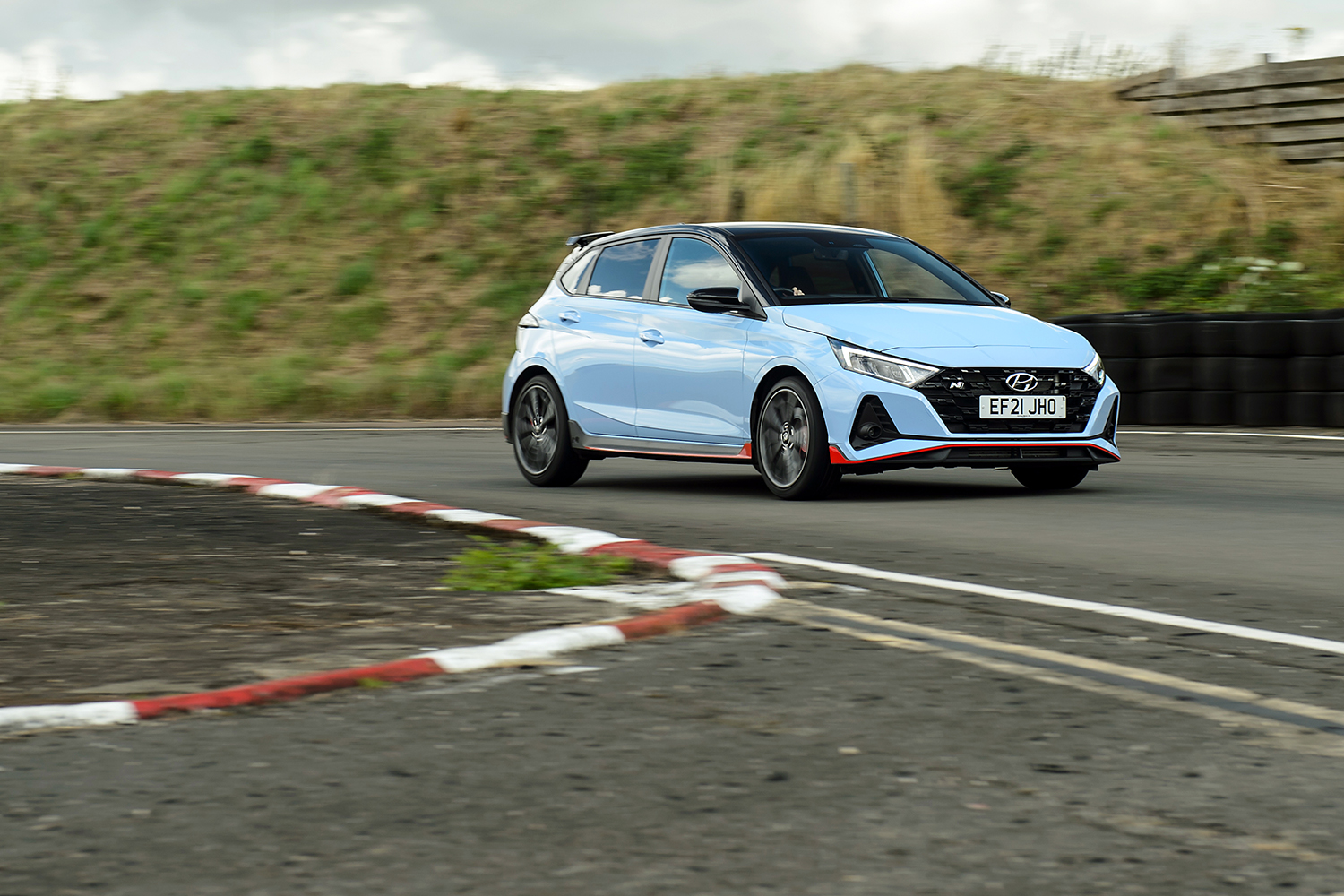Things we like
- Brilliant chassis
- Superb controls
- Well equipped
Not so much
- Busy ride around town
- Engine lacks charisma
- Torque steer on rough roads
Let’s get straight to the point: The i20 N is the best driver’s car Hyundai makes. In fact, it’s the best driver’s car Hyundai has ever made. And we’re not damning with faint praise, either.
A more focused car than even the impressive i30 N, this little Hyundai has what it takes to run with the best hot hatches in the business. Ford Fiesta ST, you’re on notice.
Hyundai’s mainstream i20 is the Korean carmaker’s rival to Ford’s regular Fiesta (Australia only gets the ST), Volkswagen’s Polo and Toyota’s Yaris.
That the hot i20 N has launched within 18 months of the debut of the third-generation mainstream i20 hatch in March last year highlights a significant change to Hyundai’s vehicle development under Hyundai-Kia R&D chief, Albert Biermann.
Key requirements for N models are now baked in at the beginning of the process.
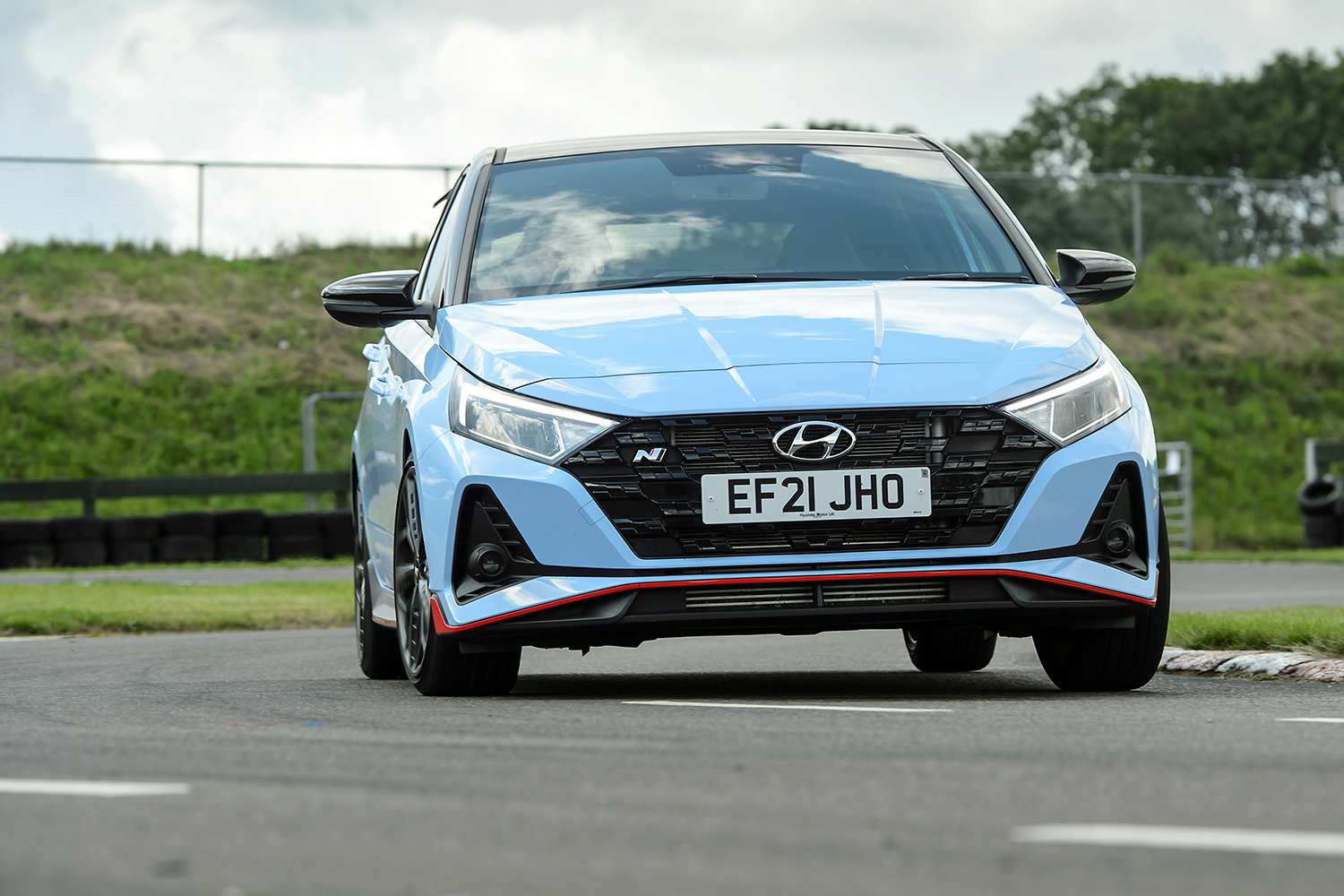
The i20 N is therefore more than just some extra grunt under the bonnet combined with bigger wheels and stiffer suspension, all wrapped in bright paint and a few spoilers. It is a properly thought-out hot hatch.
The bodyshell has been reinforced in 12 different places, particularly around the front subframe that supports new front suspension with reinforced top mounts and knuckles. An additional brace in the rear load space helps keep the torsion beam rear axle more precisely located.
New hubs mean the i20 N’s spidery 18-inch forged alloys, shod with Pirelli P Zero tyres especially developed for the car, are located by five bolts rather than the four that fasten the wheels on the regular i20. New front disc brakes have rotors 40mm larger in diameter than those of the regular i20.
And while the i20 N, unlike the i30 N and Kona N, retains the column-mounted motor for the electronic power steering system, the steering rack ratio has been sharpened from 12.4:1 to 12.0:1 and the motor retuned to improve response and counter torque steer.
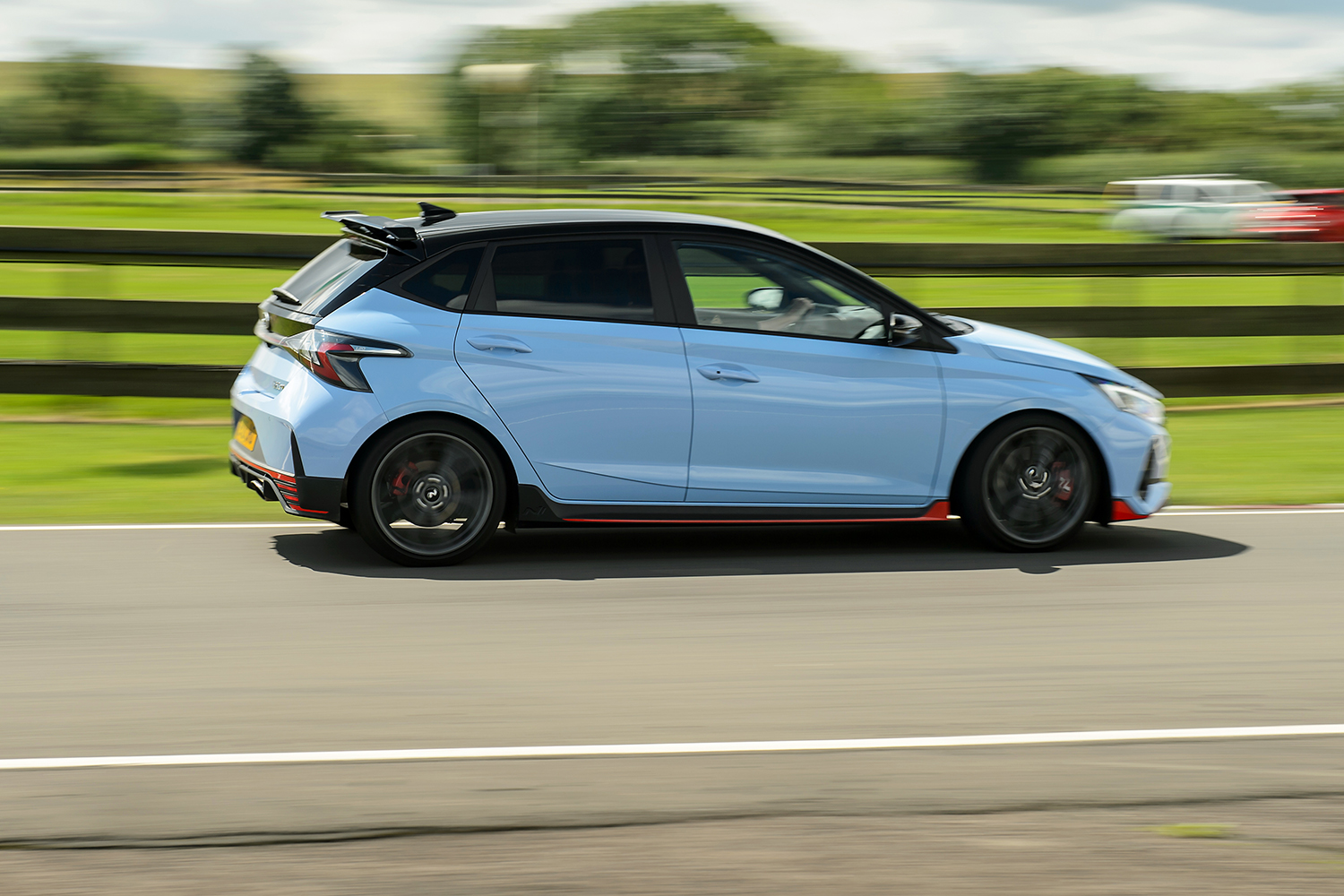
The i20 N is more than just some extra grunt under the bonnet combined with bigger wheels and stiffer suspension, all wrapped in bright paint and a few spoilers.It is a properly thought-out hot hatch.
Regular i20s are powered by 1.0-litre three-cylinder or 1.2-litre four-cylinder petrol engines (and a 1.5-litre four-cylinder diesel is available in some markets), none boasting more than 88kW and 172Nm. The i20 N gets a tweaked version of the 1.6-litre turbocharged four-banger found in the N-Line versions of the regular i30 hatch and sedan.
In those cars the engine makes 150kW at 6000rpm and 265Nm from 1500rpm to 4500rpm. In i20 N-spec a new intercooled turbocharger setup has boosted torque to 275Nm from 1750rpm to 4500rpm.
The engine drives the front wheels through a six-speed manual gearbox that’s been upgraded to handle the extra torque, and the shock of full-throttle Launch Control starts.
Like the i30 N and Kona N, the i20 N has a limited-slip differential. Unlike the e-diff fitted to its two bigger siblings, though, the i20 N’s front axle uses a mechanically controlled Torsen gear to optimise torque flow.
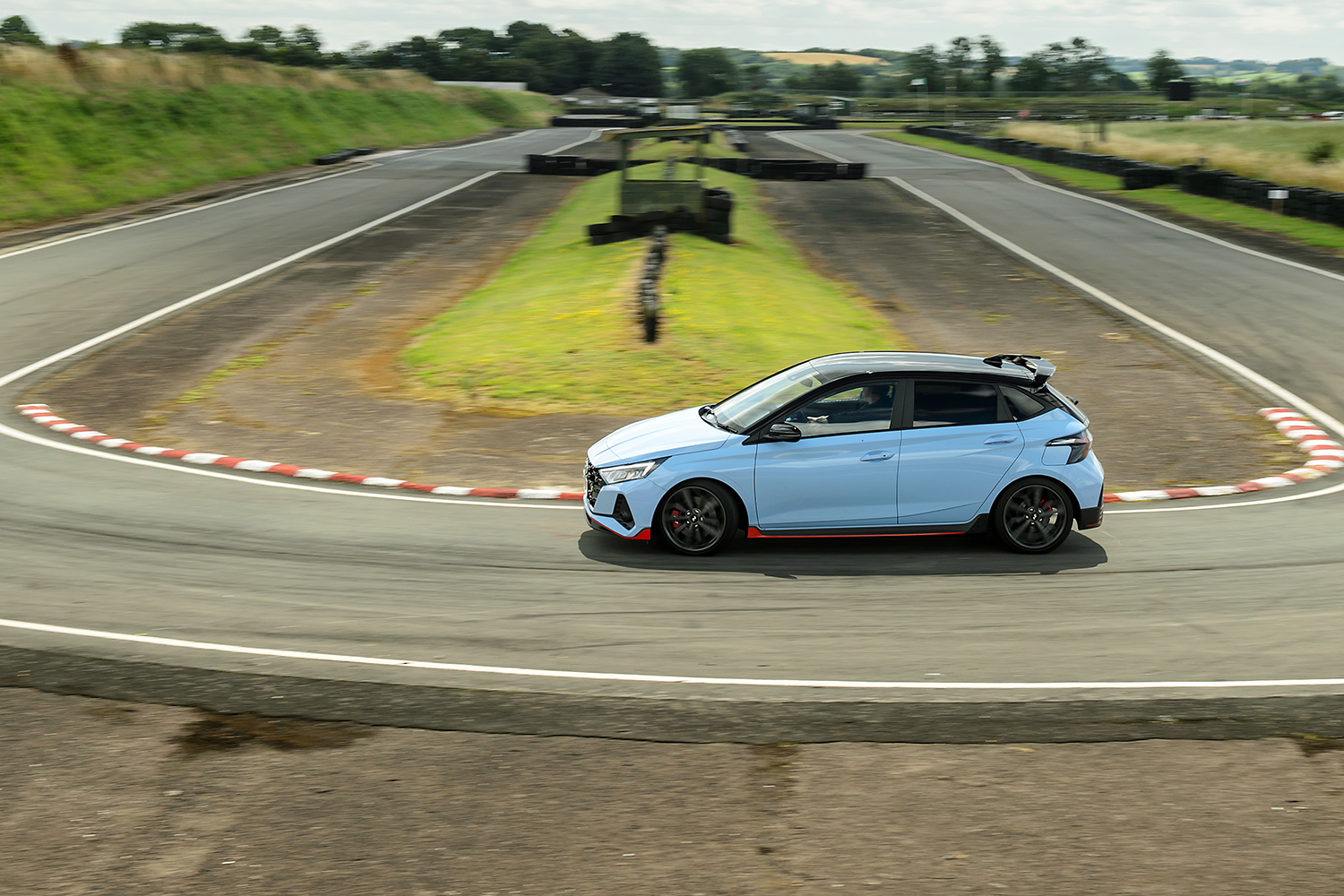
In line with the other N models, the i20 N offers six different drive modes: Eco, Normal, Sport, N, and two different configurable N Custom settings which allow you to mix ‘n’ match the settings for engine, steering, stability control and exhaust sound. You can’t change the suspension settings – unlike the i30 N and Kona N, the i20 N’s dampers are passive.
In addition to the standard Launch Control system, the on-board computers will also automatically match revs on downshifts and allow you to left foot brake while keeping your right foot on the throttle. It’s proper performance car stuff, and the i20 N feels sorted the moment you slide behind the wheel and snuggle into the supportive seat facing a configurable digital instrument panel and contoured leather-bound steering wheel.
Fire it up, head down the road, and the first impressions get even better. There’s a solidity to the body structure that makes the no-nonsense tautness of the suspension feel engineered into the car, not merely bolted on.
And the control weights – the lovely, mechanical throw of the gearshift, the consistent arc of the clutch, the firm, easily modulated brake pedal, and the crisp steering response – all have the smooth, measured heft you’d normally associate with something engineered in Germany, not Korea.

That, perhaps, should come as no surprise: Before he joined the company, Hyundai R&D chief Albert Biermann had spent 30 years at BMW, finishing his career there as head of the company’s M division. It’s Biermann you can feel in the i20 N.
Find a quiet country road, tap the N button, and the little Hyundai will quickly have you grinning from ear-to-ear. “The i20 N is more of a rascal than the i30 N,” says Hyundai-Kia dynamics engineer Alex Eichler, who’s based at the company’s technical centre in Russelsheim, Germany. He’s absolutely right. It’s a lively, energetic little thing with a giant-killing personality.
Like Hyundai’s other turbocharged motors, the i20 N’s engine is workmanlike rather than charismatic, and all about the mid-range. Keep the revs between 3000rpm and 5500rpm, and the 1190kg hatch scoots from apex to apex with effortless alacrity. Hyundai claims a 0-100km/h time of 6.7 seconds and a top speed of 230km/h, and the i20 N feels every bit that quick.
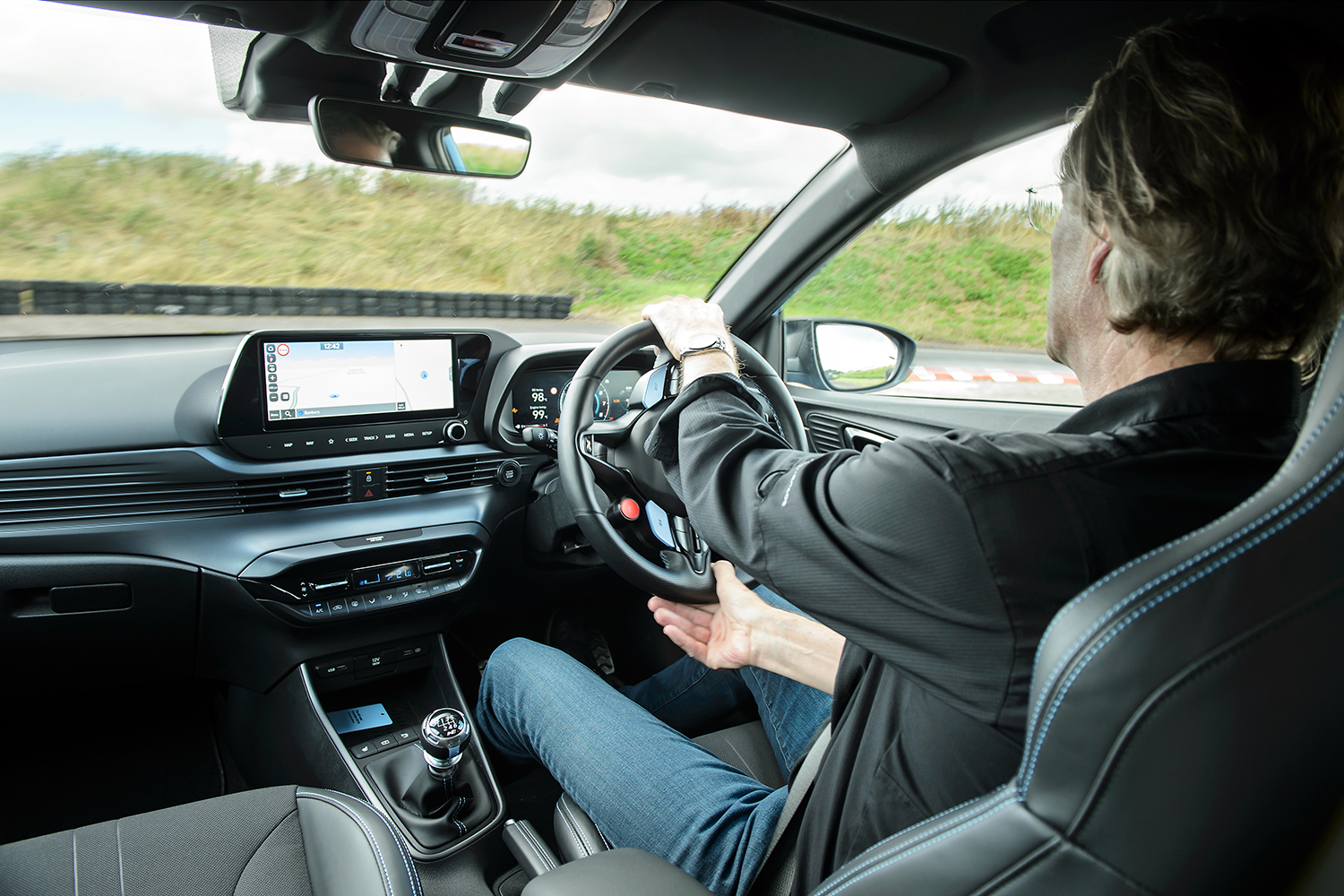
It won’t be long before you’re thumbing the red button under the right spoke of the steering wheel to switch off the rev matching: The beautifully weighted pedals are perfectly placed for neat and quick heel-and-toe downshifts, the exhaust snap-crackle-popping playfully on the over-run.
As with the i30 N and Kona N, the i20 N’s front end is outstanding, delivering instant response the moment you pull the steering wheel off center, and a ton of grip. After a few kays you’re braking deeper and deeper into the corners, the little Hyundai, inside rear wheel hanging in the air, promptly rotating towards the apex as you turn in. It feels agile, but not nervous.
You learn to go to power earlier than you thought possible because – counter-intuitively for a front-wheel drive car – the extraordinary traction generated by the mechanical limited-slip diff helps tuck the nose in even tighter. There are few, if any, small hot hatches that can match the i20 N’s raw mid-corner speed.
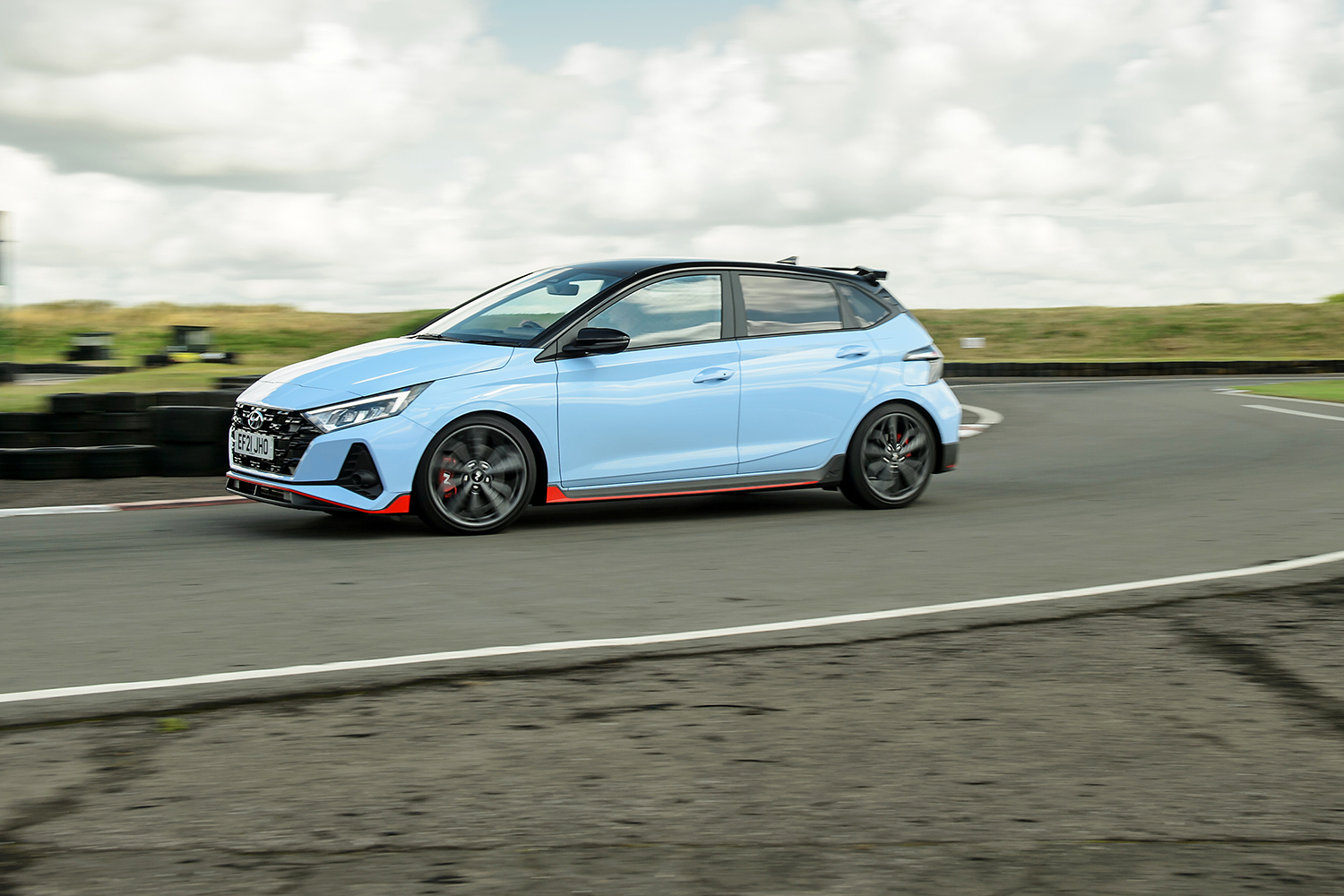
Back in town, with everything switched back to Normal, the i20 N is a fun little commuter car. Yes, the ride is busy – hardly unexpected in a stiffly suspended car that doesn’t weigh much and has a short wheelbase – but not uncomfortably so.
And, being a Hyundai, you get a lot of comfort and convenience for your $32,490 (plus on-road costs), including 10.25-inch touchscreen infotainment system, cruise control, climate control air conditioning, and a rear parking camera.
We’ll make the definitive call once we can get them wheel to wheel on the same roads, but our first experience with the Hyundai i20 N suggests Ford’s Fiesta ST has a real fight on its hands. Both cars are priced right on top of each other, but the Hyundai is lighter and more powerful. And it has the chassis to make the most of it.
Things we like
- Brilliant chassis
- Superb controls
- Well equipped
Not so much
- Busy ride around town
- Engine lacks charisma
- Torque steer on rough roads
We recommend
-
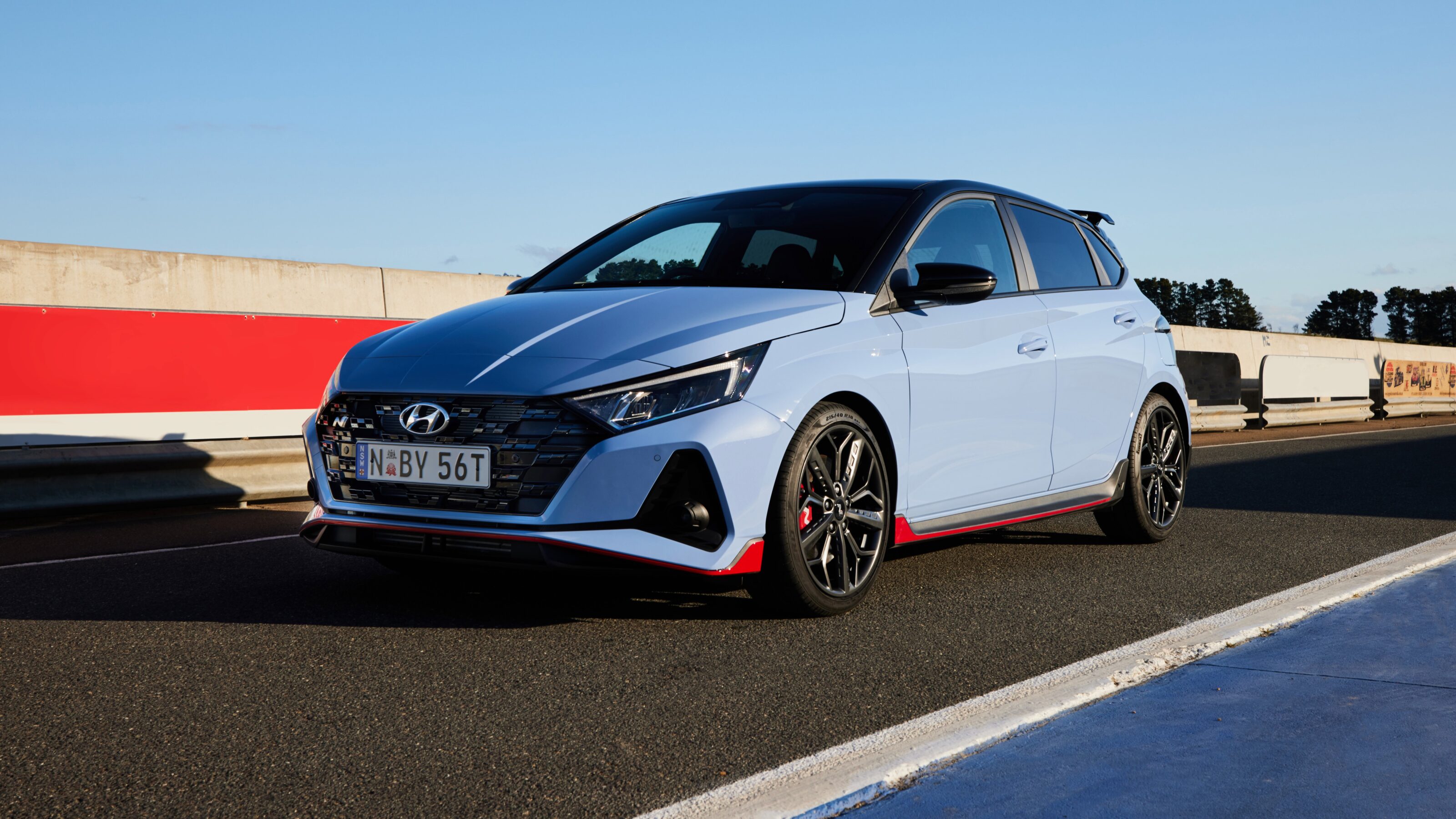 News
News2022 Hyundai i20N pricing and features
Korea’s Fiesta ST rival hits the Aussie market from $32,490
-
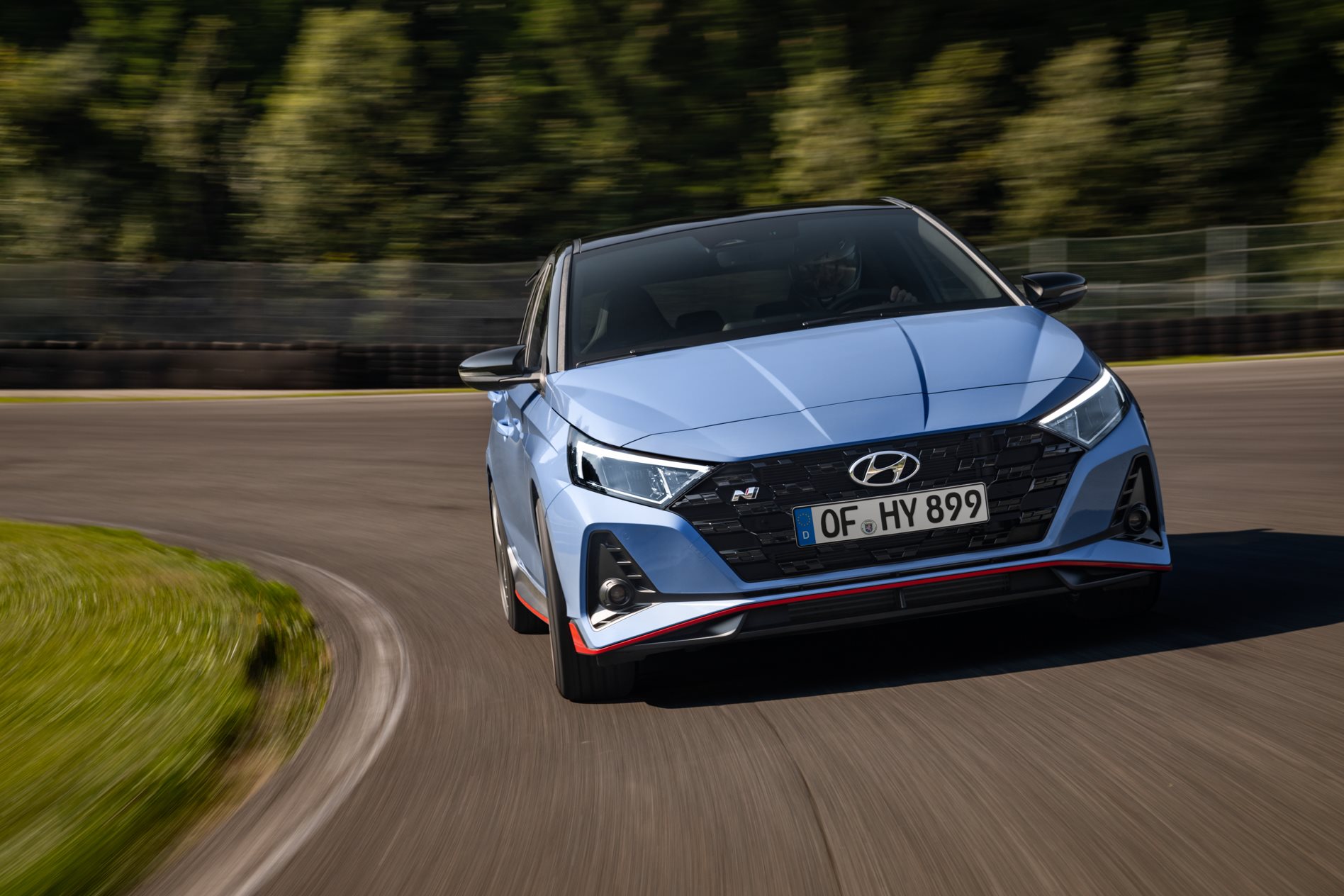 Reviews
Reviews2021 Hyundai i20N prototype review
Hyundai’s new i20 N is a 150kW front-drive sensation aimed squarely at the Ford Fiesta ST
-
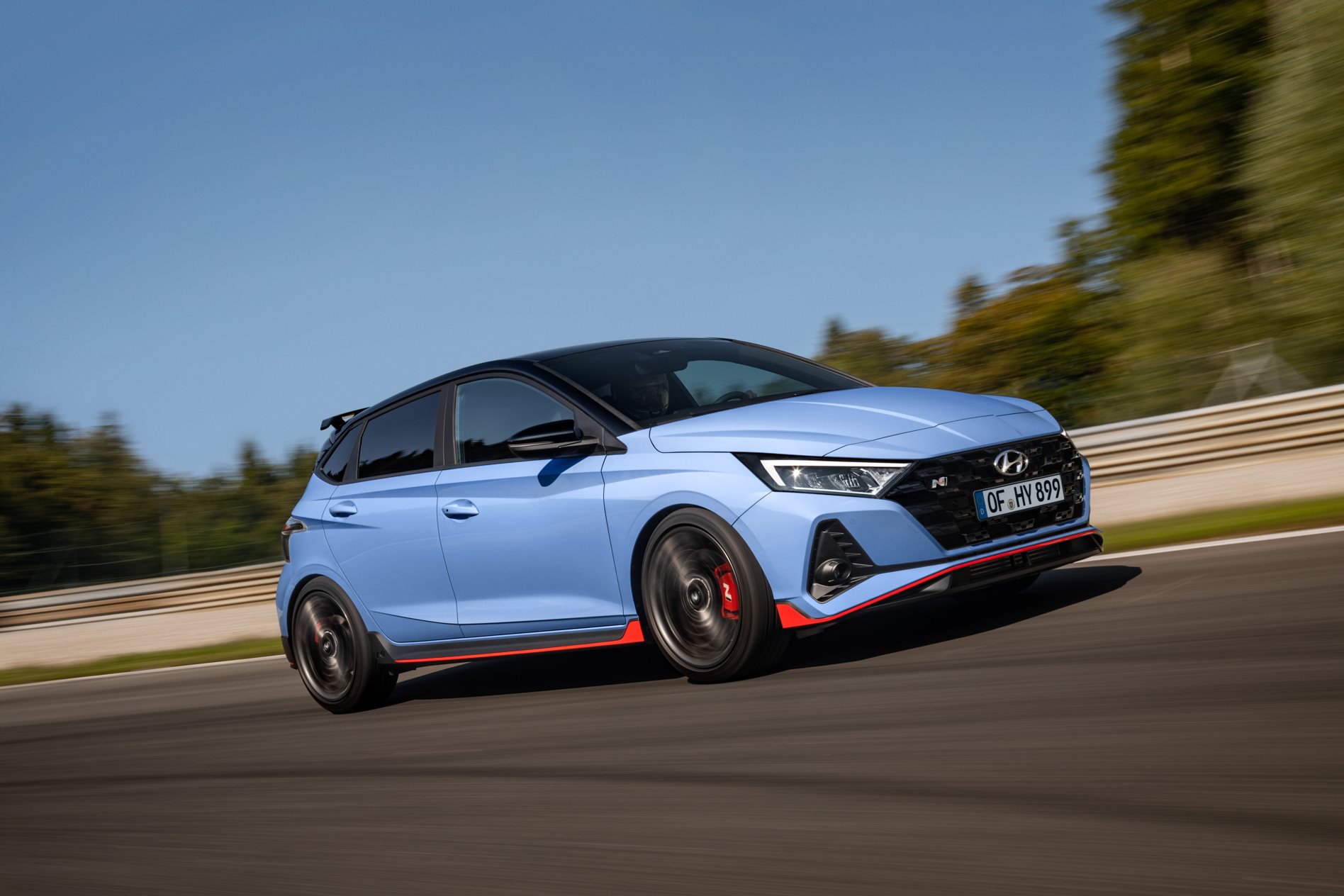 Features
FeaturesWill Hyundai's i20 N get a DCT? We ask the head of engineering
Hyundai's newest N model is the i20 N and Wheels magazine sat down with the head of N high performance vehicle development


